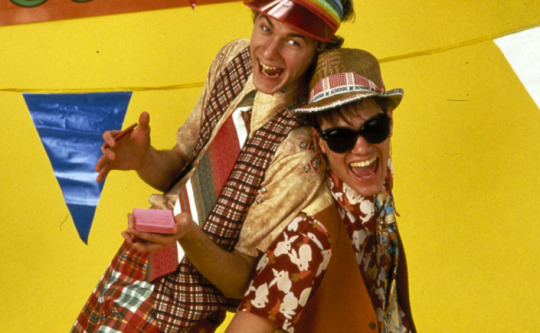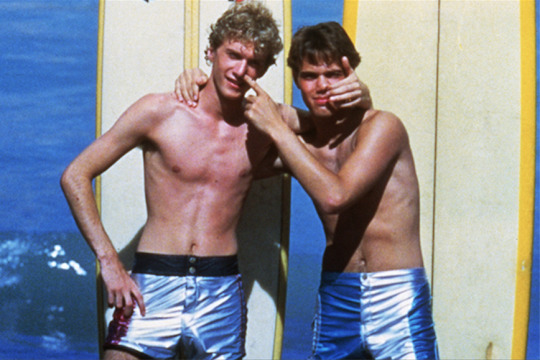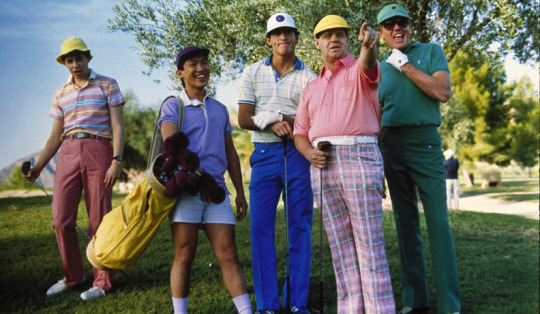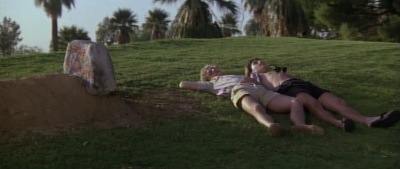O.C. and Stiggs And The Utterly Unreleasable, Mind-Roasting Summer Of Robert Altman by Keith Phipps
By Yasmina Tawil

[This month, Musings pays homage to Produced and Abandoned: The Best Films You’ve Never Seen, a review anthology from the National Society of Film Critics that championed studio orphans from the ‘70s and ‘80s. In the days before the Internet, young cinephiles like myself relied on reference books and anthologies to lead us to film we might not have discovered otherwise. Released in 1990, Produced and Abandoned was a foundational piece of work, introducing me to such wonders as Cutter’s Way, Lost in America, High Tide, Choose Me, Housekeeping, and Fat City. (You can find the full list of entries here.) Over the next four weeks, Musings will offer its own selection of tarnished gems, in the hope they’ll get a second look. Or, more likely, a first. —Scott Tobias, editor.]
Robert Altman was happiest working in the shadows. That’s true of his relationship with Hollywood—where he never fit in, except as the town’s designated maverick—but also true of his relationship with other movies. Altman always had a lot to say about his craft, even if he tended to treat interviews as opportunities to reiterate points he made many times. One talking point he returned to, including when I spoke to him in 2000, is the notion that influence could work backwards. “The directors who’ve probably had the most influence on me,” he said, “were probably names I don’t even know, because I looked at a film that was really bad and I would say, ‘Hmm, I’m never going to do that.’ That’s probably the most direct positive influence on the work I do. I don’t even know who those directors are.”
When talking about Altman, it’s always worth talking about what he was trying not to do as much as what he hoped to accomplish. M*A*S*H can be seen as a war film determined to show viewers what other films would not, from the bloody mess left after battles end to the long stretches of wartime boredom to the sometimes ugly sides of the lifesaving heroes. McCabe and Mrs. Miller is a Western without heroes. The Long Goodbye lets a noir play out in the sunny, counterculture-filled ‘70s Los Angeles.
All of which sort of explains how Altman came to direct the teen comedy O.C. and Stiggs—but only sort of. Shot in 1983—while films like Screwballs, Private School, and Losin’ It rolled out in multiplexes across America—it should have been released to catch the wave of raunchy teen comedies stirred by National Lampoon’s Animal House in 1978 and made into a tsunami by Bob Clark’s Porky’s three years later. But Altman was far from on board with the T&A-filled spirit of the times. When approached by producer Peter Newman, he recalled thinking, in an interview conducted for the film’s DVD release, “This isn’t my kind of film. I don’t know how to do these kinds of films.’ But that was a time when these teenage films were kind of in…mode. And I hated them. I just hated them. And I thought, here’s a chance to do a satire on something that I feel strongly about.” “I went after it,” he added, in a telling choice of phrase, “in that matter.”

He at least had slightly more prestigious source material from which to draw, if only slightly. Though the film doesn’t bear the National Lampoon name, its title characters, a pair of prank-happy Arizona teens, come from the magazine’s pages. Created by Lampoon writers Ted Mann and Tod Carroll, Oliver “Out Of Control” Ogilvie and Mark Stiggs became favorite recurring characters in the Lampoon’s last gasp of relevance in the early ’80s. Their stories also embodied the changes to the magazine’s spirit in the Reagan era, when the always freewheeling publication started punching down far more often than it punched up. Two children of privilege, the O.C. and Stiggs of its pages enjoy an adolescence filled with excess, abuse, and casual racism and misogyny. Their adventures climaxed with the novella-length “The Utterly Monstrous, Mind-Roasting Summer of O.C. and Stiggs,” which took up the entirety of the Lampoon’s 1982 issue.
It also provided the backbone to Altman’s film, courtesy of a screenplay credited to Mann and Donald Cantrell. In Hunter Stephenson’s extensive history/appreciation of the film, Mann notes that Carroll worked on the script but took his name off the movie. Altman then reworked the script and allowed it to drift further from the original vision thanks to a typically improvisation-friendly set. Really, he had no choice. Altman was never known for being overly respectful of screenplays, but O.C. and Stiggs plays as if he’s compelled to actively work against the source material while still following the outline of the plot. There’s a brutal wit to Mann and Carroll’s stories*, but the teenage nihilism at their core is hard to square with Altman’s sensibility, which could be unsparing of human behavior while still maintaining an underlying respect for human decency.
As such, Wino Bob, the boys’ “Negro derelict” friend, is given all the dignity a character named Wino Bob can hope to have, thanks to a heartfelt performance from Melvin Van Peebles. The heroes’ attempt to shame a pair of teachers in a gay relationship becomes the occasion for one of the teachers to say he doesn’t care. And the film’s central conflict between O.C. and Stiggs’ and the Schwab family, a grotesque suburban clan that’s grown rich from insurance sales, becomes a battle between haves and have-nots, with O.C. now motivated to exact revenge on the Schwabs thanks to the cancellation of his grandfather’s (Ray Walston) health insurance, a development that will send O.C. off to live with relatives in Arkansas at the end of the summer unless something can be done. What emerged looks more like an Altman movie than, say, Fraternity Vacation, but it’s a strange beast nonetheless, a Brundlefly-like hybrid that’s not really equipped to live in any known movie habitat. There’s too much overlapping dialogue and restless camerawork, to say nothing of the virtual absence of nudity, for Porky’s fans, too many outrageous pranks for the arthouse.

That might explain why MGM didn’t know what to do with the movie, shelving it after disastrous screenings in 1984, which came and went without a release. So did 1985. And 1986. And though the film apparently played some theaters in 1987, it didn’t reach New York until 1988, when it appeared at Film Forum as part of a Dennis Hopper retrospective. Most viewers who encountered it did so on VHS in the late ‘80s, when it already looked like a lost film from a bygone time, the T&A comedies of the early ‘80s having given way to the more sympathetic efforts of another Lampoon alum, John Hughes. (If nothing else, Jon Cryer, who plays the much-tormented Randall Schwab, already looked noticeably younger in his feature debut by the time saw the light of day.)
Yet while O.C. and Stiggs will deservedly never be mentioned near the top of any Altman ranking of the director’s film (or, if we’re being honest, too close to the middle), there’s nothing else quite like it. Both Daniel H. Jenkins and Neil Barry (O.C. and Stiggs, respectively) make for appealing leads, embodying their characters’ screw-it-all, question everything, respect nothing teenage attitude without making them seem heartless. (That spirit in two lines: “I want you to call me Stiggs. It sounds more ridiculous.”) And for every obvious flaw, there’s some compensating element. A big wedding set piece doesn’t really go anywhere, but it does feature a charming dance sequence between Jenkins and Cynthia Nixon (both of whom would stay in Altman’s orbit for a while). The comedy falls flat in the action finale, but it does feature a bizarre, self-parodying performance from Dennis Hopper as a Vietnam vet for whom the war never ended. Some sections drag, but Altman throws in a winning concert scene from King Sunny Ade. Also featured: Jane Curtin as an inventive alcoholic mom for whom every object can double as a place to hide booze, a supremely chill Martin Mull, Bob Uecker, and a cameo from Hal Phillip Walker (Thomas Hal Phillips), the third-party candidate whose cryptic proclamations filled the background of Nashville.
It’s a film that time has only made more intriguing, thanks to its unmistakable Altman-ness, its undeniable eighties-ness, and the uneasy alliance the film forces between the two. Altman “went after” the ‘80s teen movie, and though the genre barely noticed his attack, the resulting film remains a disjointed but spirited critique of Reagan-era values and a salute to the teen spirit of subversion, even if that subversion took the form of driving around in a suped-up car with monster truck tires on it just to annoy the squares.

The film first came to my attention, years after its release, via my friend Todd Hanson, a gifted writer for The Onion whose pop culture enthusiasms had a way of getting passed from co-worker to co-worker. When I got the chance to speak to Altman, I knew I had to devote at least a few of my previous 20-minute slot to what had by then become an office-wide obsession. “I was attacking the teen mentality of the audience,” he said, “and I just was a little too… Nobody got it.”
Looking back, it might be that not enough tried. At that low ebb of Altman’s commercial fortunes—post-Popeye, pre-Player—he’d become too easy to take for granted and an odd, flawed, but undeniably one-of-a-kind film could be dismissed as just another ‘80s misstep. Maybe it seemed like we’d have Altman movies forever, and the era in which studios might somehow find themselves funding impossible-to-define oddities that doubled as single-finger salutes to the bad taste of their intended audience would never end.
* In an odd case of two geniuses drawing inspiration from an unlikely source, Mann and Carroll’s stories also inspired D.R. and Quinch, an early writing effort from comics great Alan Moore.


